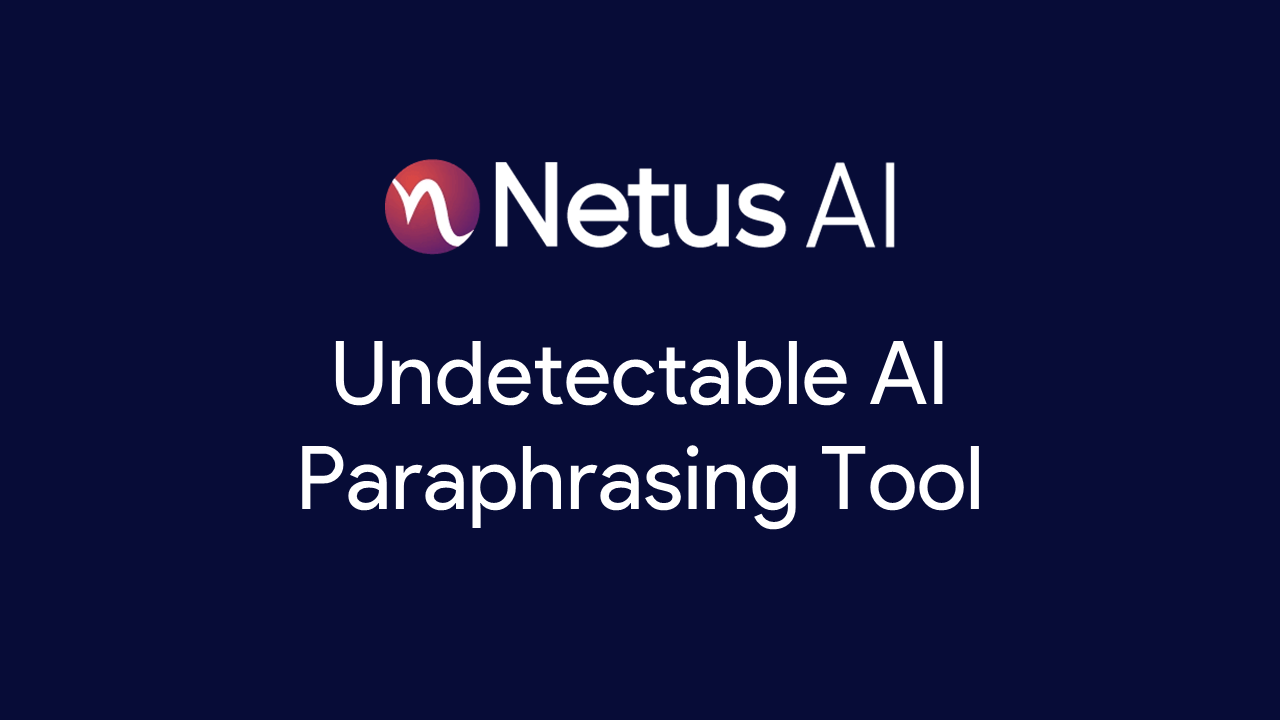NetusAI

Navigating AI Paraphrasing Tools and Detection Algorithms
The advent of AI-driven paraphrasing tools has revolutionized content creation, offering a quick and efficient way to generate unique and high-quality content. NetusAI, a notable player in this field, transforms AI-generated content into human-like writing, featuring various capabilities tailored to diverse content needs. Among its offerings are an AI bypasser to avoid detection and an AI detector to distinguish between human-written and AI-generated text with high accuracy. However, the interaction between these tools and detection algorithms, such as those used by Turnitin, presents a complex landscape for content creators.
The Capabilities of NetusAI
NetusAI stands out as an advanced paraphrasing tool designed to aid writers in producing high-quality, unique content swiftly. By leveraging sophisticated algorithms, it transforms AI-generated text into content that closely mimics human writing. The tool's AI bypasser aims to circumvent detection by AI-detection tools, while its AI detector ensures the authenticity and integrity of the generated content.
The Netus.ai blog has highlighted a critical issue: is Quillbot AI detectable? This question is essential for those relying on AI paraphrasing tools to avoid plagiarism detection. Turnitin, a leading plagiarism detection service, has significantly advanced its algorithms to identify AI-generated content, including paraphrased text from tools like QuillBot. While QuillBot strives to rephrase text while preserving its meaning, its outputs can still exhibit detectable patterns.
Understanding Turnitin's Detection Mechanisms
Turnitin's algorithms are designed to detect similarities in text beyond mere word matches. They analyze the structure, context, and overall linguistic patterns, allowing them to identify paraphrased content. This sophisticated approach means that even significant changes in wording by tools like QuillBot might not escape detection. Thus, the question, will Quillbot be detected as AI? becomes pertinent for users relying on paraphrasing tools to avoid plagiarism.
Evaluating QuillBot's Effectiveness
QuillBot aims to offer alternative phrasing while maintaining the original meaning, which can help users avoid plagiarism. However, its effectiveness in evading Turnitin detection is mixed. The key question remains: is Quillbot AI detectable? Some users report that their QuillBot-paraphrased content was flagged by Turnitin, indicating that the detection tool can recognize AI-generated paraphrasing to some extent. Others have managed to submit QuillBot-generated work without being flagged, suggesting variability in detection depending on how the paraphrasing is done.
Turnitin's Advanced Capabilities
Turnitin continues to enhance its detection capabilities, incorporating machine learning and natural language processing (NLP) to improve its ability to identify paraphrased and AI-generated content. These advancements mean that Turnitin can increasingly detect the nuanced changes made by paraphrasing tools like QuillBot. As Turnitin's algorithms become more sophisticated, the likelihood of detection increases, raising concerns about whether Quillbot will be detected as AI.
Practical Implications for Content Creators
For content creators, understanding the dynamics between paraphrasing tools like QuillBot and detection services like Turnitin is crucial. The persistent question, is Quillbot AI detectable?, looms large. Relying solely on paraphrasing tools to avoid plagiarism is increasingly unreliable as detection algorithms become more sophisticated. While tools like NetusAI offer features designed to circumvent detection, their long-term effectiveness remains uncertain. Content creators must therefore be vigilant and consider multiple strategies to ensure their work remains original and free from plagiarism concerns.
Conclusion
The interplay between AI paraphrasing tools and detection services presents a complex landscape for content creators. NetusAI exemplifies the advancements in AI-driven writing assistance, providing powerful tools for generating human-like content. However, as Turnitin and similar services enhance their detection capabilities, the question of whether Quillbot will be detected as AI becomes more pertinent. Understanding these dynamics and the limitations of paraphrasing tools is essential for anyone engaged in producing high-quality, authentic content. The evolving capabilities of detection algorithms underscore the need for continuous adaptation and vigilance in the use of AI-driven writing tools.